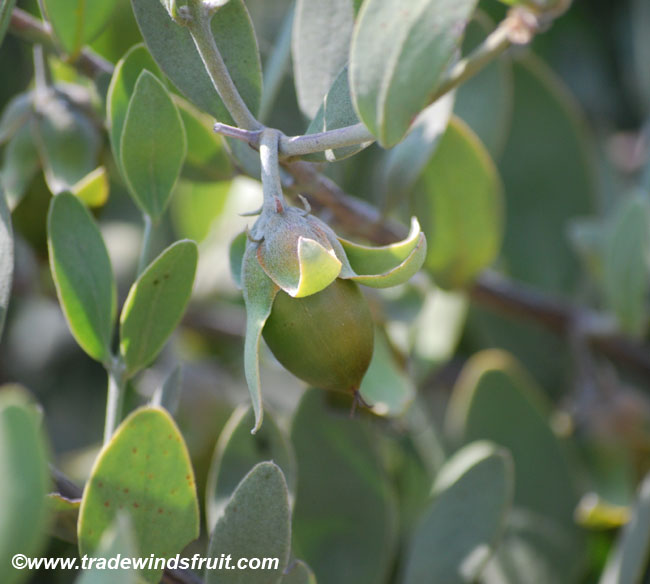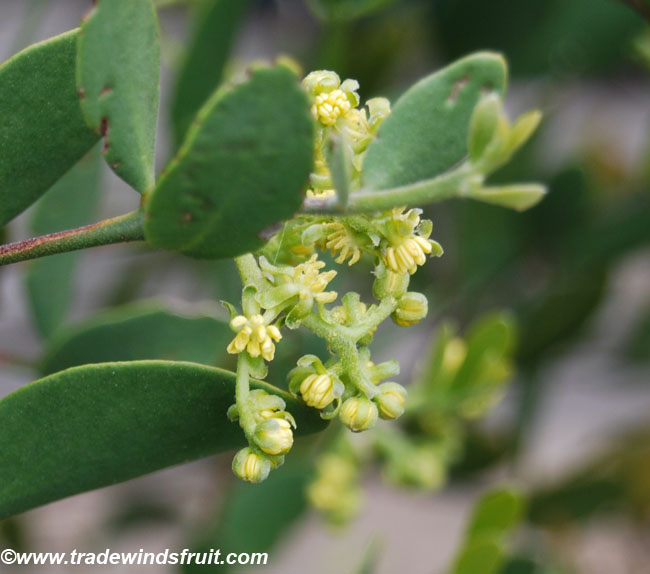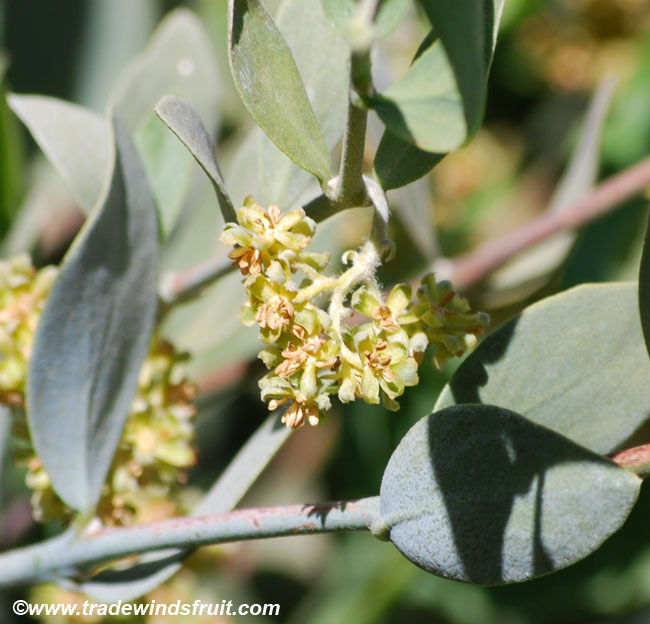- Home »
- Information »
- Jojoba
Jojoba
Simmondsia chinensis
The desert-native Jojoba is best known for its seed oil, which has numerous uses in cosmetics and industry. A tough and hardy plant, it bears brown, acorn like fruits which grow to 1/2-3/4" long.
Seed Availability
Seeds are now available at our seed store.
Description
A shrubby bush usually growing to 3-6 feet, though occasionally taller. Leaves are opposite, up to 1 1/2" long, thick, with a waxy gray-green coloration. Flowers are small, with a green-yellow color and contain no petals. Jojoba plants are usually dioecious, either male or female, with both sexes needed to produce fruits. There are occasional hermaphrodite plants. The plants are long lived, with specimens routinely living 100-200 years. While often solitary in growth, jojoba's can produce ground based shoots and form into thickets.
Hardiness
Frost hardy to 18-20F. Very tolerant of hot, desert-like temperatures.
Growing Environment
The jojoba is a very tough plant once established. Grow in full sun. Needs minimal watering, maybe only once or twice a month during the warm season. Very tolerant of most soil types so long as they are well drained. Protect young plants from excessive heat or very prolonged drought.
Propagation
By seeds, which produce male or female plants in a roughly 50/50 ratio. Propagation is also by cuttings.
Uses
Popularly grown for its nuts which contain a liquid wax (usually referred to as an oil) that is a popular ingredient in cosmetics and skin care products. The oil is odorless and has moisturizing properties for the skin. It has replaced the chemically similar sperm whale oil for many uses. There are also possible uses as a biofuel. Another common use for the jojoba is as a landscape plant for arid regions. Leaves are used as forage material for livestock.
Native Range
Native to the Sonoran and Mojave deserts through Mexico, Arizona and California. It is cultivated commercially in the United States, Mexico, as well as some other arid regions including Israel, Australia and portions of South America.
Additional Pictures
Related Species
| Simmondsiaceae | |||
 |
Simmondsia chinensis Jojoba |



